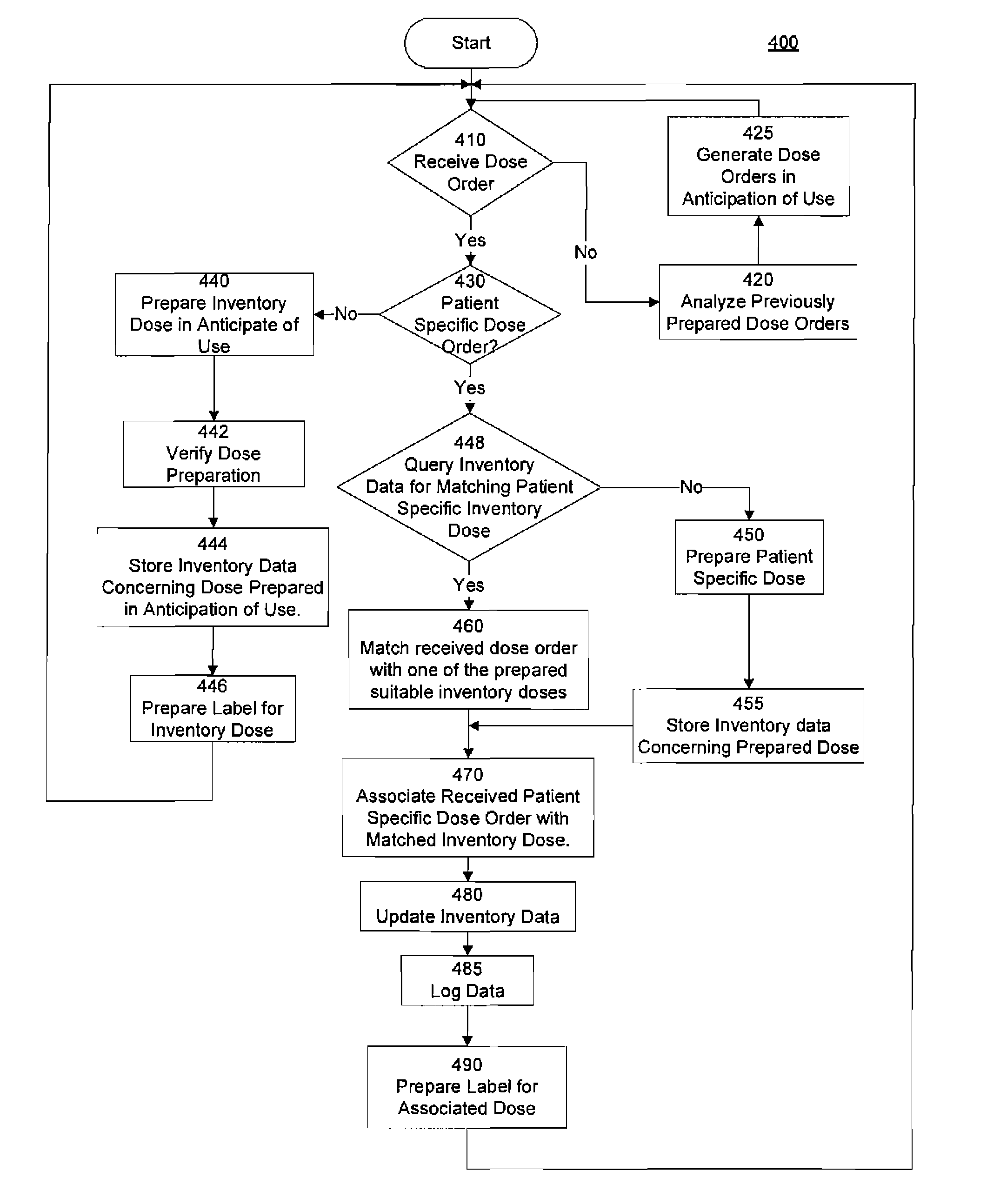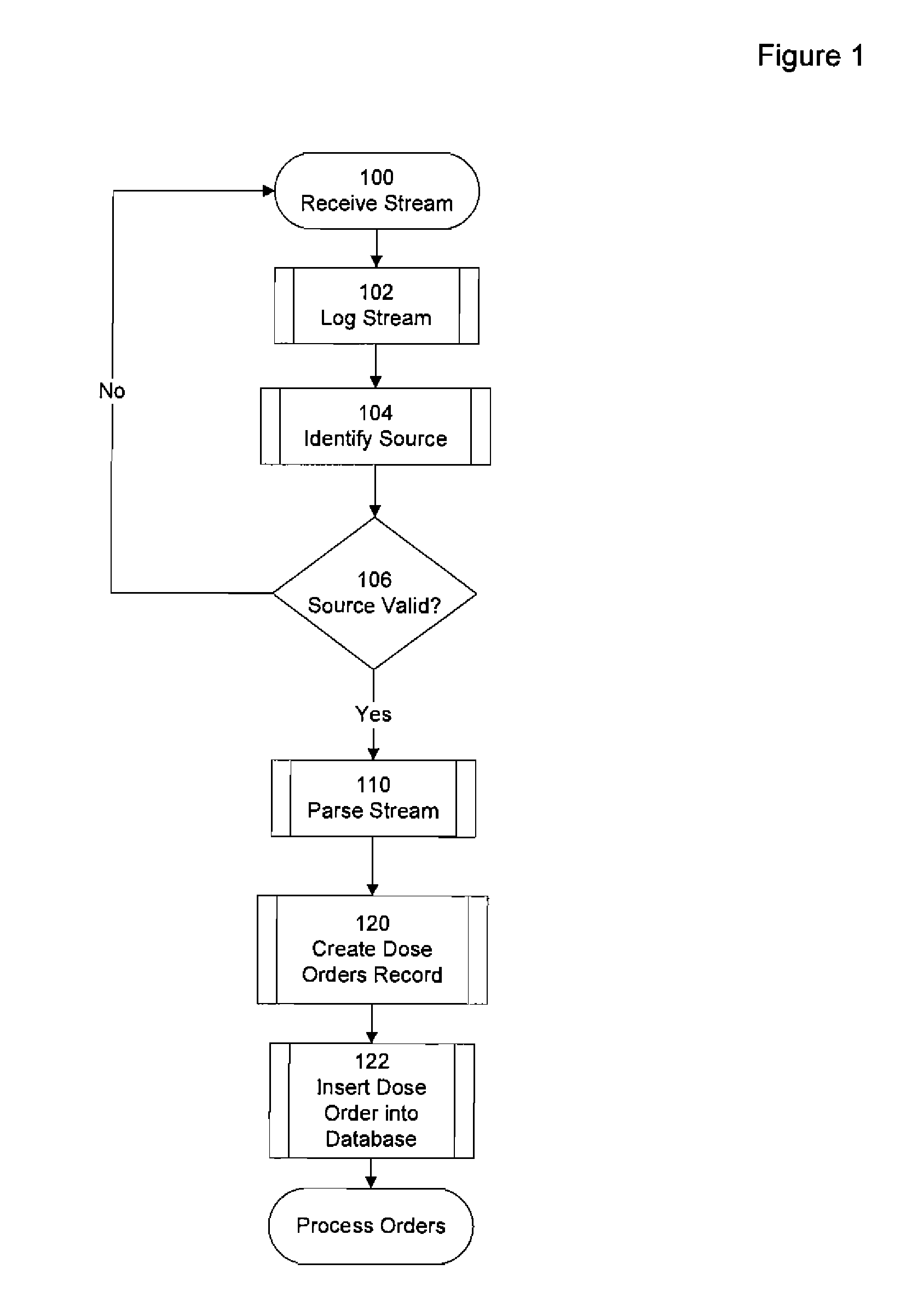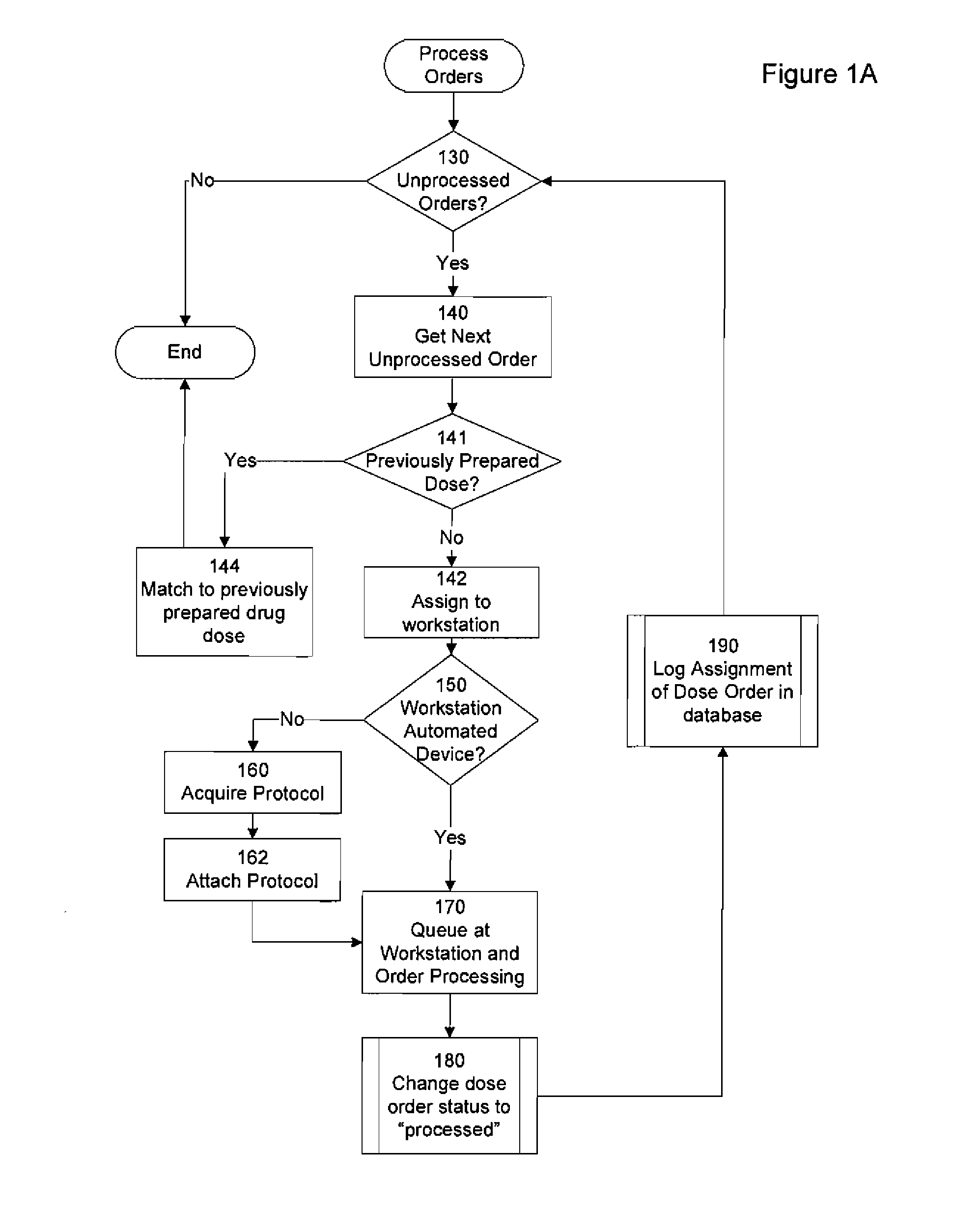Automated centralized preparation of medications in anticipation of use
a technology of centralized preparation and medication, applied in the field of centralized management of medication dose orders and medication dose preparation in anticipation of use, can solve the problems of inefficiency associated with the present process and management of medication orders, process susceptible to miscommunication or loss of information, and pharmacy computer systems do not provide preparation instructions to the sterile product compounding technician
- Summary
- Abstract
- Description
- Claims
- Application Information
AI Technical Summary
Benefits of technology
Problems solved by technology
Method used
Image
Examples
Embodiment Construction
[0024]The present invention relates to the capture, processing, tracking, and distribution of medications. More particularly, the invention relates to an automated fulfillment system and method for receiving incoming medication dose orders, processing those orders, preferably in an efficient and optimized manner through the selective use of either an automated medication preparation fulfillment system or a manual medication preparation, and tracking the prepared medication dose through to its predetermined destination.
[0025]By way of overview and example, a doctor can enter one or more medication orders (“medication order”) at a terminal in a hospital. The terminal can be connected via a network or to a computer system in the pharmacy. When the order is processed by the pharmacy computer system and labels for medication doses are generated, the data contained in the order and on the labels is captured, processed, and parsed by a computer implemented system to create individual medic...
PUM
 Login to View More
Login to View More Abstract
Description
Claims
Application Information
 Login to View More
Login to View More - R&D
- Intellectual Property
- Life Sciences
- Materials
- Tech Scout
- Unparalleled Data Quality
- Higher Quality Content
- 60% Fewer Hallucinations
Browse by: Latest US Patents, China's latest patents, Technical Efficacy Thesaurus, Application Domain, Technology Topic, Popular Technical Reports.
© 2025 PatSnap. All rights reserved.Legal|Privacy policy|Modern Slavery Act Transparency Statement|Sitemap|About US| Contact US: help@patsnap.com



